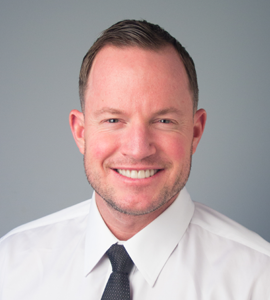
Bret Hankey President of Hankey Group and Vice Chairman of Westlake Financial Services
Even under the best of circumstances, managing diabetes can be extremely challenging. Bret Hankey is one of the lucky ones who has had outstanding medical care since he was diagnosed with Type 1 diabetes as a youngster. Even having the best doctors, medications and devices available, diabetes still almost killed him.
On a recent beach vacation with his family, he took off his continuous glucose monitor and the worst happened. His blood sugar dropped too fast and too far and he suffered a cardiac arrest that nearly ended his life.
Hankey always took great care to avoid high sugar levels, but sometimes that leads to levels that are too low.“ Dr. Peters has told me that I need to be more vigilant and that those low numbers can be dangerous,” he said, “but I didn’t take it seriously enough.”
Now that he has recovered, he is determined to contribute to causes that improve outcomes for patients with diabetes—starting with a contribution to the physician who has cared for him for decades. The Hankey Foundation recently contributed $2 million to fund a patient care and research program led by Anne Peters, MD, professor of clinical medicine at the Keck School of Medicine of USC and director of the USC clinical diabetes programs.
“Dr. Peters is extremely passionate about helping the underserved and people who can’t afford to buy the supplies they need,” said Hankey. “I know how important it is to her to care for this community and that made me want to help her with this project.”
Hankey comes from a family of USC alumni, making his philanthropy even more meaningful. His gift will help Dr. Peters further develop a system, called Tele-CGM, that uses technology she is developing to help monitor her patients. The system integrates near real-time and retrospective continuous glucose monitoring data into a virtual diabetes clinic. The gift will also pay for some of Dr. Peters’ patients to receive continuous glucose monitors, which attach to the body and read blood glucose levels throughout the day, as well as for staff to educate and monitor patients.
In her work as director of the USC Westside Center for Diabetes in Beverly Hills and the Roybal Managed Diabetes Care Program in East Los Angeles, Dr. Peters sees how access to the best treatments and devices impacts the overall health and quality of life of patients. Those who lack access to the tools they need are more likely to suffer devastating outcomes related to diabetes such as blindness, dialysis and amputations. Recent technological advances for managing diabetes have left many patients with fewer resources even further behind in their care. And the COVID-19 pandemic illustrated the staggering death toll on underserved people with diabetes in Los Angeles County.
This project is meant to help bridge the gap that exists between those with and those without access to excellent health care. Hankey’s gift will allow Dr. Peters to develop and implement a program designed to help underserved patients with diabetes in the ways they need it most. As with all her projects, local focus groups will provide input in developing the program and feedback will be incorporated throughout its implementation.
The Tele-CGM platform that is being developed will automatically collect data from the continuous glucose monitoring devices given to her patients. The platform will send daily alerts and weekly summaries to a centralized dashboard. The system will read all the data from her patients and through the dashboard, alert Dr. Peters if any are experiencing extreme changes in their blood glucose levels, allowing her to intervene before a crisis can occur.
“Many of my patients have difficulty getting devices because their insurance won’t pay for it,” said Dr. Peters, noting that these devices can be extremely helpful to patients if used in the right way.
This idea of a virtual clinic is one that Dr. Peters has been working on for several years. This type of a monitoring system will help prioritize her patients and identify those who may need to change their medication or schedule a telehealth visit. Some companies have developed systems that allow patients to upload their data for their doctors to see, but all the existing systems require physicians to look at each individual file to evaluate each patient’s condition.
Dr. Peters’ system saves physicians time and effort as it sorts the data and identifies patients in trouble. A diabetes educator will contact patients to provide assistance and conduct a telehealth visit at the patient’s convenience. Diabetes management advice will also be given to the patient’s primary care doctor to create a team approach to care.
If she can prove that her system can improve patient outcomes, Dr. Peters may be able to share Tele-CGM with other doctors to improve care for the underserved everywhere and improve the lives of millions of people.
“I am so grateful to Bret and his family for their support of this project,” said Dr. Peters. “Having been his doctor for so many years, I know him well and know that he wants this project to succeed — and to help many people who need better treatment — as much as I do.”